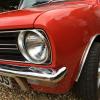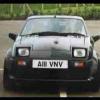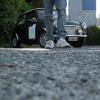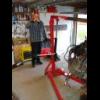I didn't disconnect the hydraulics when I did mine
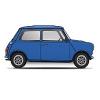
Front Hub Nut Torque & Breaker Bar
#31

Posted 24 February 2014 - 06:55 PM
#32

Posted 24 February 2014 - 06:56 PM
No, the flat washer you should use is larger in diameter so that it connects with the face of the hub to push It into place on the cv joint.
I'm sure you have seen the one that mini spares sells, you may be able to get something similar locally.
SPECIAL WASHER FOR SEATING CV AND WHEELBEARIN......
TOOL21
Perfect, thanks.
Yet another stupid question... when taking the hub itself off you have to disconnect the brakes as per haynes? I don't quite get how it's written. Do you need to disconnect the hose and when you come to refit it use a new shakeproof washer? Then bleed?
No just take the caliper off first and rest it on a brick or something. and I've never ever used a flat washer and never had a problem.
#33

Posted 24 February 2014 - 07:01 PM
No need to disconnect brake flex hose. Remove the complete caliper (2 x 3/8 in UNF bolts, 9/16in AF spanner), then make sure you support the caliper to avoid straining the brake flex hose. You can thread some string thru one of the hikes and tie it up to support it.No, the flat washer you should use is larger in diameter so that it connects with the face of the hub to push It into place on the cv joint.
I'm sure you have seen the one that mini spares sells, you may be able to get something similar locally.
SPECIAL WASHER FOR SEATING CV AND WHEELBEARIN......
TOOL21
Perfect, thanks.
Yet another stupid question... when taking the hub itself off you have to disconnect the brakes as per haynes? I don't quite get how it's written. Do you need to disconnect the hose and when you come to refit it use a new shakeproof washer? Then bleed?
#34

Posted 24 February 2014 - 07:05 PM
yep you need the flat washer, as well as 1 1/2" socket and 1 5/16" socket and of course a ball joint splitter.
don't forget to lap the ball joints in
OK will order the flat washer. I have the sockets and splitter already ![]()
No need to disconnect brake flex hose. Remove the complete caliper (2 x 3/8 in UNF bolts, 9/16in AF spanner), then make sure you support the caliper to avoid straining the brake flex hose. You can thread some string thru one of the hikes and tie it up to support it.
No, the flat washer you should use is larger in diameter so that it connects with the face of the hub to push It into place on the cv joint.
I'm sure you have seen the one that mini spares sells, you may be able to get something similar locally.
SPECIAL WASHER FOR SEATING CV AND WHEELBEARIN......
TOOL21
Perfect, thanks.
Yet another stupid question... when taking the hub itself off you have to disconnect the brakes as per haynes? I don't quite get how it's written. Do you need to disconnect the hose and when you come to refit it use a new shakeproof washer? Then bleed?
Ok I think I was reading too far into the bit for drum brakes only by mistake.
#35

Posted 24 February 2014 - 07:28 PM
As nick says re-removal, although I use a piece of angle iron drilled so that it fits over two hub studs and then it wedges the hub against the floor on stops it moving.
The torque settings, presuming you have disc brakes are as follows,
Where there are two split pin bores in the CV joint the hub nut must be torqued to 150 lbtft / 207 Nm, then tightened further to align the hole.
Where there is only one split pin bore the hub nut must be torqued to 193 lbft / 262 Nm, then tightened further to align the hole.
I have always thought that 193lbft + tightening further to align the hole is a massive torque for setting taper roller bearings. In my experience they always wear prematurely after replacement? or am I missing something?
(Like the drilled angle iron to lock hub)
#36

Posted 24 February 2014 - 09:14 PM
- Never use a impact socket to torque hub nuts
- Stopping the hub from spinning by blocking the studs to the ground is asking for troubles
- Doing an hub nut without a torque wrench requires experience, if you're not experienced enough, get one suitable for the job.
At the end tightening to next pin hole it will be a lot more than 150 nm, most imporant is to spin hub while you torque the big nut.
#37

Posted 24 February 2014 - 09:21 PM
- Never use a impact socket to torque hub nuts
- Stopping the hub from spinning by blocking the studs to the ground is asking for troubles
- Doing an hub nut without a torque wrench requires experience, if you're not experienced enough, get one suitable for the job.
At the end tightening to next pin hole it will be a lot more than 150 nm, most imporant is to spin hub while you torque the big nut.
What do you mean by the bit in bold?
Undoing it, I was planning to do the 'tyre on floor, friend on brake, in gear' method.
#38

Posted 24 February 2014 - 09:28 PM
If you are using 7.5" discs then the torque figure is 150 ft lbs (BMC Manual) and thats what i used on my Clubby drum to disc conversion. Be careful to use the correct figures for your car.
#39

Posted 24 February 2014 - 09:54 PM
- Never use a impact socket to torque hub nuts
- Stopping the hub from spinning by blocking the studs to the ground is asking for troubles
- Doing an hub nut without a torque wrench requires experience, if you're not experienced enough, get one suitable for the job.
At the end tightening to next pin hole it will be a lot more than 150 nm, most imporant is to spin hub while you torque the big nut.
What do you mean by the bit in bold?
Undoing it, I was planning to do the 'tyre on floor, friend on brake, in gear' method.
Thats fine for undoing, toqueing is another matter, you need to feel it by spinning the hub.
Theres no proper torque setting for hub nuts, because you have to tighten them to next pin hole, and between 1 hole and another theres a huge difference in torque, you cant go wrong.
Where you can go wrong is the seating process, thats why you need to pre-load the bearings by using a flat washer and you need to spin the hub to make the bearings sit perfectly.
Edited by jaydee, 24 February 2014 - 09:55 PM.
#40

Posted 24 February 2014 - 10:19 PM
What do you mean by spinning the hub? Soz if I'm being stupid..
#41

Posted 24 February 2014 - 11:12 PM
I should have said spin the drive flange assembly, easier to understand.
Infact while your assistant is pushing the brakes you torque the nut a bit, then he release the brakes and you rotate the drive flange one or two turns, then repeat. It helps the seating plus you'll feel if theres something wrong with the bearings.
#42

Posted 24 February 2014 - 11:17 PM
I should have said spin the drive flange assembly, easier to understand.
Infact while your assistant is pushing the brakes you torque the nut a bit, then he release the brakes and you rotate the drive flange one or two turns, then repeat. It helps the seating plus you'll feel if theres something wrong with the bearings.
I get it now. Cheers ![]()
1 user(s) are reading this topic
0 members, 1 guests, 0 anonymous users



